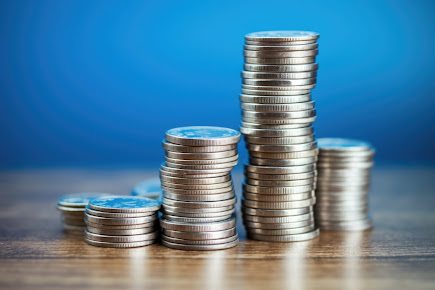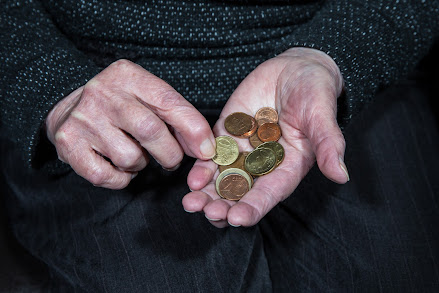Commodity money is a form of money that has inherent, intrinsic value because it is made from a commodity that has value by itself for production or consumption. Commodity money is a physical asset - you can see it, hold it, touch it.
In simpler terms, gold coins were commodity money because the gold from which the coins were made had intrinsic value and if the coins were melted down, the gold would still retain its value. The gold could also be used for production, i.e., making jewelry, giving it its intrinsic value.
But we should backtrack a bit here – what is money? Money can be defined as an asset that is accepted as a medium of exchange for goods or services. The value of that asset can and was determined by many different factors but it often boiled down to a commonly recognized value by the people that use it.
In that context, there are three primary categories or types of money (the latter 2 will be discussed in more detail later):
- Commodity money
- Representative money
- Fiat money
Popular examples of commodity money throughout history were gold, silver, and copper, cocoa beans, shells, tea, barley, furs, and even cigarettes. Clearly, people exchanged all types of commodities for goods or services. Then, how is commodity money different from bartering?
Commodity Money vs. Bartering
Bartering is an exchange system where goods are exchanged for other goods or services. The value of the items that are being exchanged is determined by the people participating in the trade. So, if an ancient cattle farmer was to give a calf to a carpenter in exchange for a table, that would be bartering.
But the system of bartering has several limitations. For one, it is difficult to transport different types of goods across large distances, making it impractical. Second, there is no set ‘exchange rate’ or how the value of one asset converts to all other assets.
Third, many goods cannot be divided into smaller parts, making smaller trades or more accurate exchanges difficult. Finally, many goods are also perishable, which disallows them to be a store of value. So, bartering faced 4 challenges:
- portability;
- convertibility;
- divisibility;
- perishability.
To make trade more effective, the concept of commodity money evolved. A single type of asset that was portable, divisible, and non-perishable would be chosen and used to trade for other goods and services at an agreed-upon exchange rate.
Thus, the key difference between barter and commodity money is that commodity money uses a single recognized unit of exchange to purchase goods or services.
Two Other Primary Types of Money – Representative and Fiat Money
To reiterate, commodity money is money that has intrinsic value due to the commodity of which it is made. But there are also two other primary categories of money:
- Representative money – representative money is when the value of the money is backed by an underlying commodity that has intrinsic value and where the unit of money can be exchanged for the underlying commodity via a formal process, but where the unit of money has no intrinsic value itself. In other words, paper money that is backed by gold and can be exchanged for that gold at a fixed rate is representative money. So a paper bill represents (and can be exchanged for) the equivalent value of the gold that backs it. While the US was under the gold standard, the USD was a form of representative money.
- Fiat money – Fiat money is a form of money that has no intrinsic value and is not backed by a commodity, i.e., it does not represent the equivalent value of an underlying commodity. The value of fiat money is backed by the government that issues it and is accepted as a form of payment because there is an agreement on how much a specific currency is worth. Almost all modern currencies, from the Chinese yuan to the Brazilian real, are considered fiat money.
To simplify, commodity money is made from a physical commodity and has intrinsic value, representative money has no intrinsic value but represents a commodity that has intrinsic value and can be redeemed for it, while fiat currency has no intrinsic value and does not represent a commodity but is given value as a unit of exchange by the institution that issues it.
Examples of Use of Commodity Money
The most common example of commodity money throughout history is the use of metal coins, like gold, silver, or copper. Silver coins based on the Spanish dollar are likely the best example of commodity money in the Americas.
But that is far from the only example of the use of commodity money. For instance, beaver pelts were the main unit of exchange in the area around Hudson’s Bay in Canada for fur traders in the 18th century.
This system came about because the First Nations were not interested in exchanging goods for precious-metal coins, so they needed to find another medium of exchange – the beaver pelts. They even had an exchange rate set up, e.g., 5 pounds of sugar were worth 1 beaver pelt while 1 gun cost 12 beaver pelts.
Eventually, even that commodity money system evolved. For convenience, Hudson Bay post managers started issuing stamped copper or brass tokens in different sizes – these were called made beaver coins. The largest token represented the pelt of one adult male beaver in good condition. The smaller tokens represented smaller pelts. Thus, the commodity money system of the fur traders evolved into a combined commodity and representative money system over time.
In modern times, it may seem like commodity money is a historical occurrence, given that almost all countries use representative or, more commonly, fiat money. But that is not the case – commodity money can exist alongside other money categories.
Cigarettes are a common form of commodity money when other types of currency are prohibited. For example, they were often used in prisons in the US as a unit of exchange before smoking was banned in prison in the early 2000s.
While the line where a commodity becomes a currency can be debated, generally speaking, whenever a single commodity is recognized by a population as a unit of exchange for goods or services, it can be considered commodity money. Source






